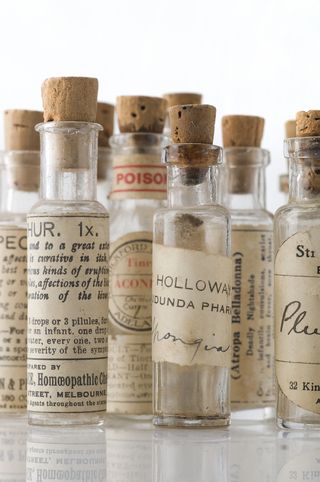
28 Oct What is Homeopathy?
Homeopathy is an alternative medical practice in which extremely dilute amounts of certain natural substances are used to treat various ailments.
Although homeopathic medicines are sold in health food stores and at high-end groceries, homeopathy is largely considered quackery. No scientific evidence supports its use; the theory of how homeopathy could work is beyond the realm of known physics; and governments worldwide are increasingly denying insurance payments to cover homeopathic treatment.
History of homeopathy
Homeopathy was developed in the late 18th century by Samuel Hahnemann, a respected doctor in Germany. Hahnemann believed that “like cures like” and that minute concentrations of a particular toxin could cure the very same symptoms it would cause in larger doses. Think poison ivy to treat rashes.

This notion of “like cures like” was similar to the emerging science of inoculation and vaccination. And Hahnemann’s treatments in their dilute forms were far safer than most medical practices during his time, such as bloodletting.
Nevertheless, doctors — and chemists, in particular — soon came to understand that homeopathy could not work because the dilutions are implausible, diluted to the point that there is no longer any medicine in the medicine.
How homeopathy works
Homeopathy is based on rigorous dilutions and mixing, called successions. The dilution level is printed on the bottle of medicine. A typical homeopathic dilution is 30X, where the X represents 10. So, one part toxin (such as the aforementioned poison ivy) is mixed with 10 parts water or alcohol. The mix is shaken; one part of this mix is added to 10 parts of water or alcohol again; and the whole process is repeated 30 times.
The final dilution is one molecule of medicine in 10 to the 30th power (1030) of molecules of solution — or 1 in a million trillion trillion. At this dilution level you’d need to drink 8,000 gallons of water to get one molecule of the medicine — physically possible but implausible.
Other homeopathic solutions are 30C, which represents 100 to the 30th power (10030). There’s not enough water in the solar system to accommodate this dilution.
Hahnemann didn’t realize this because he developed his theory before the concept in chemistry of the mole and Avogadro constant, which defines the number of particles in any given amount of a substance. So, Hahnemann and his followers could do the mechanical actions of dilution, but unbeknownst to them, they were diluting the medicine right out of the solution.



